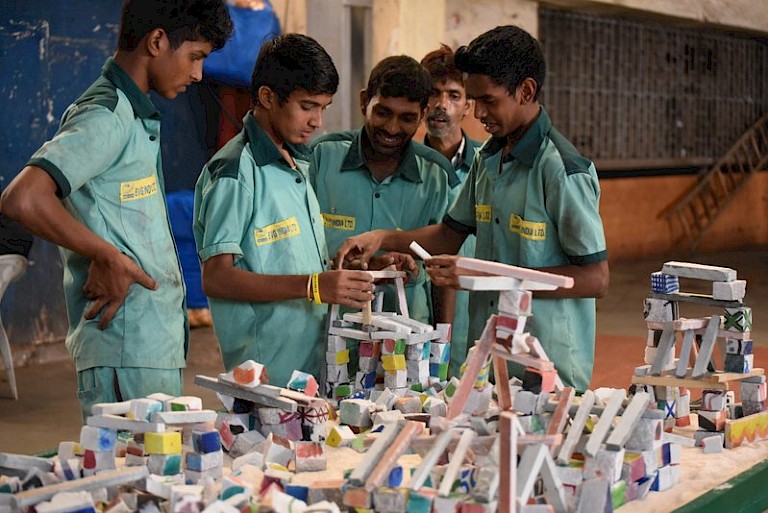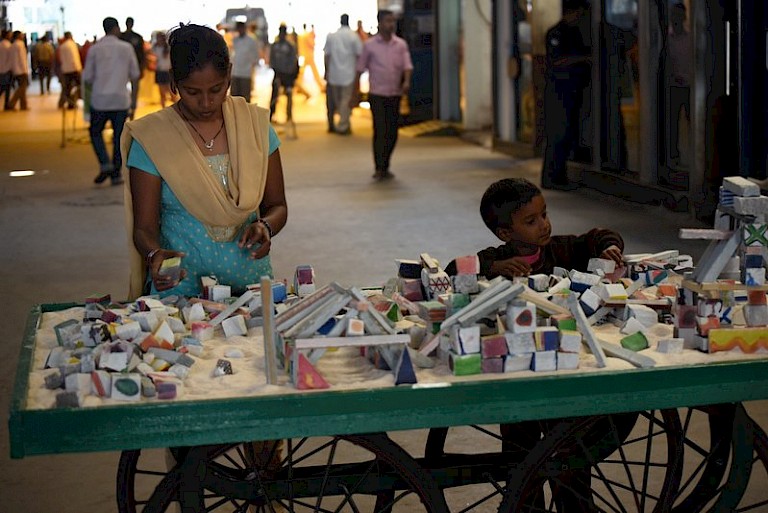



Partapur also is one of the towns that contributes to the large number of migrant labour moving from Rajasthan to first-tier cities in India in the hope of steadier earnings. In October 2014, the Times of India quoted a UNESCO study that suggests Rajasthan is one of the largest contributor to migrant labour in India, where 46.26% of rural households have one or more family members working cities. Across India, thousands of young people leave their homes in similar small towns and villages to move to cities with similar expectation, creating a shared experience of migration that ends, usually, at the more populated long-distance railway stations like the CST station, which becomes their first entry point into a city-space. This migrant labour contributes largely to India’s economic growth, but their lives in the cities they choose to work in are often extremely difficult.
Guezennec’s installation at the CST station was aimed to strike multiple chords with its extremely large and demographically wide audience (train passengers). It is important to note that the station also caters to local trains running along Mumbai’s Harbour Line, which made the work open to local passengers as well, with approximately 8 million passengers passing through every day. So not only was this an immediate reminder of something familiar for many stepping off the outstation trains into Mumbai, it also affected the city’s locals reminding them of the impermanent structures, with lack of access to so much most locals take for granted, be it health care, education or access to cooking kerosene – the migrant force of Mumbai lives in. Given it’s time frame and the location the project reached a large number of people and was covered by local media as a project highlighting the vulnerabilities of transient populations across India.
This project seeks to tap into migratory histories of people passing through Mumbai's oldest (and busiest) railway station: Chhatrapati Shivaji Terminus. It was originally created in rural Rajasthan (a north-west state in India with a largest reported yearly migration to metropolises in India), and then re-created for Mumbai, to bring out a whole new shared experience between locals in Mumbai and the thousands of migrants that move to Mumbai every year.
The project was originally developed by Guezennec at the Sandarbh Residency in Partapur, a small town in Rajasthan. Guezennec was struck by the beauty in the designs of houses there, but also noted they were empty, as most of their residents were at work in different cities altogether. The project is her way of creating shared experience and memories in a limited budget.
All copyright belongs to Shanghai Academy of Fine Arts, Shanghai University.



